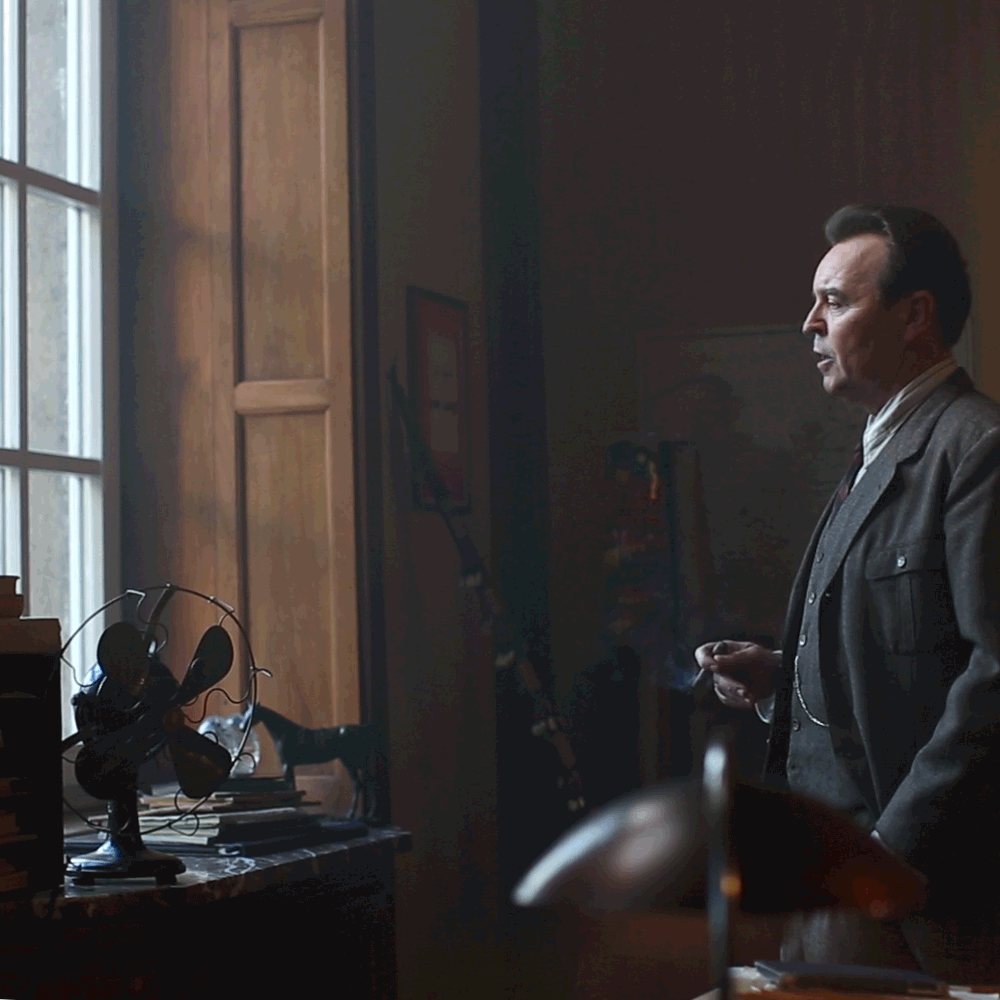
05 Oct The first copywriter of the Polish Republic.
In 1903 the future writer began his education at the Pawel Chrzanowski Gymnasium in Warsaw (the school still exists and is now the No 17 Secondary School named in honour of Jan Zamoyski). Melchior took an early interest in politics during his years as a pupil. In 1905 he took part in a student strike and in 1907 got involved with the Inter-Partition National Association of Secondary School Pupils aka ‘Future’ which was strongly influenced by the National League. Between the years of 1909 and 1910 Wańkowicz was the leader of ‘Future’. He was present in Cracow during the ceremonies connected with the 5th centenary of the victorious battle of Grunwald between the armies of Poland and Teutonic Knights’. The monument commemorating the famous battle, founded by Ignacy Paderewski, was unveiled during the events. In 1911 Wańkowicz was arrested for slapping a political opponent in the face.
Being an active member of conspiracy, he started writing to school periodicals. However, his involvement in the underground magazine Wici [Call to Arms] (1909), where he published under the nom de plume Jerzy Luzyc, is considered to be his official debut. The most famous work of Wańkowicz from that period is an interview with Roman Dmowski, the leader of Polish national movement.
After graduating in 1911 Melchior Wańkowicz went on to study law firstly at the School of Legal Science in Cracow and then at the Jagiellonian University. During those years he got involved with a number of national and independent movements. When the Great War begun in 1914 Wańkowicz, being a Russian subject, was forced to leave Cracow, which was controlled by the Austro-Hungarian Empire, and thus put his education on hold. With the help of a fraudulent doctor’s note he managed to avoid being listed into the Russian army. Between the years of 1915 and 1916 he collaborated with the Central Civic Committee which was an organisation providing material aid to displaced Polish citizens and refugees from the Kingdom of Poland under German occupation. This kind of engagement in national affairs was popular among the nobles in Kresy – it gave them the opportunity to support the case without the necessity to serve in the army.
Wańkowicz married Zofia Małagowska of the Nałęcz family’s crest during the war, namely in 1916 (he would refer to her endearingly as “Bunny”). They got married in Kiev which was then inhabited by a large number of the more affluent Polish minority. They had two daughters: Krystyna (born in 1919) and Marta (born in 1921). The younger of the sisters would later feature in her father’s works under the nickname of “Tirliporek”. The older daughter was killed during the Warsaw Uprising.
Between the years 1917 and 1918 Wańkowicz volunteered for the 1st Polish Corps in Russia. When in May 1918 the commanding officers of the Corps agreed with the Germans to cease fire Wańkowicz, together with a group of younger officers, protested against that decision. He was arrested on the 23rd of May. Accused of mutiny he gave a speech in his own defence in which he criticised the decision of General Józef Dowbor – Musnicki suggesting that it was detrimental to the Polish cause. He was found innocent by court martial which recognised the nobleness of his motives. Soon after the demobilization he arrived in Warsaw and witnessed the first days of independence.
In post-partition Poland Wańkowicz got involved in the initiatives of the Kresy Guard Association [Towarzystwo Straży Kresowej] which appointed him the head of the Press and Propaganda Office in 1921. He supervised publications of 24 magazines, including 5 daily newspapers. He also managed 6 book shops, print houses, and a slides factory. He was the author of a series of 1919 propaganda publications such as: Why Polish Soldiers are sent to Lithuania and Belarus; Russians – your enemies; How does a Nation Govern Itself?; Parliament and its Members; Prime Minister’s Office; President of the State: Constitution and Seym. In 1920 he again entered into army service and took an active part in the battle for Eastern Kresy [Borderlands] for which he received the Cross of Valour. His experience of battles gave him the inspiration for the novel entitled The Hospital in Cichinicze [Szpital w Cichiniczach] which in 1999 was made into a film under the title The Gateway of Europe. Wańkowicz resumed his legal studies in 1923 whilst at the same time fulfilling his duties as the head of the Press Office for the Ministry of Internal Affairs. He quit his job for the government shortly before the may Coup of 1926. He devoted his efforts to independent work as a writer and publisher, remaining in conflict with the Sanacja government. He founded the Hive [Roj] Publishing House which together with the two main publishing houses of the time (Arcta and Dom Ksiazki [The Home of Books]) produced a series entitled Historic and Geographical Library [Biblioteczka Historyczno-Geograficzna]. From 1926 Wańkowicz was the main shareholder of his Hive (2/3 of shares). Wańkowicz’s printing house was amongst the biggest in inter-war Poland. He published various types of novels: contemporary, classic, and vanguard, and was not wary of publishing even those considered controversial. It was Hive which printed the first edition of Bruno Schulz’s The Cinnamon Shops and Sanatorium Under the Sign of the Hourglass, Witold Gombrowicz’s Ferdydurke and Memoirs from my Adolescence [Pamietniki z okresu dojrzewania; later retitled as Bakakaj – Bacacay], as well as Tadeusz Dolega-Mostowicz’s Career of Nikodem Dyzma [Kariera Nikodema Dyzmy]. Apart from the works of Polish authors, Hive also published works by the great, contemporary, foreign authors in brilliant translations. Amongst authors published were such talents as John Galsworthy, Aldous Huxley, Thomas Mann, Marcel Proust, Erich Maria Remarque, Bertrand Russell, and Arnold Zweig. Wańkowicz aimed at keeping his business liberal and published works of all sorts of ideological backgrounds: catholic, liberal, and Soviet (Ilia Erenburg, Boris Pilniak, Aleksey Tolstoy).
Being the head of a publishing house, however, did not fully satisfied Wańkowicz’s ambitions. He took a job as a marketing specialist for The Association of Sugar Manufacturers. In 1933 he came up with a timeless slogan Cukier krzepi [Sugar Strengthens] for which he was paid the enormous sum of 5000 Polish Zloty. In those days it was the equivalent value of a new car. It was not his only marketing success, although he never took officially claimed ownership of the slogan for condoms: “Your heart will burst sooner”.
Being a successful marketing agent Wańkowicz continued to write. He was the author of a documentary covering the Mexican civil war. However, a series of texts entitled Following Deuce’s Trail [Polish Kashubian Mythology: Smętek – a devil tormenting the Kashubian people, bringing sadness and dolour] was much more acclaimed. The journalist novel was written after his summer trip in Eastern Prussia in 1935. His description of the life of the Polish minority in the lands drowning in the flood of Nazi chauvinism was weaved with his own deliberations on the history of those lands – colonised by the Teutonic Order in the final years of the medieval era.
The novel was published in 1936 and was well received by Polish readers. By 1939 it was reprinted eight times. The Ministry of Foreign Affairs of the 3rd Reich was noticeably different. The Ministry demanded that Polish government banned the book which was included in Hitler’s list of books forbidden in Germany. After the outbreak of war, the Gestapo tried to seize the insolent writer, however, Wańkowicz managed to escape the country.
Encouraged by his success Wańkowicz took a keen interest in producing texts of a journalist nature. In 1938 he left for the USA as a correspondent for the Daily Courier and Polish Radio. Despite new challenges he did not avoid involvement in social and political issues. He supported the appeal to pardon Sergiusz Piasecki – a man sentenced to serve a long sentence in jail, whose writing talent grabbed Wańkowicz by the heart. At the request of Prime Minister Kwiatkowski Wańkowicz promoted State investments in the Central Industrial District. The last book written and published in the form of essays of documentary and non-fiction nature by Wańkowicz prior to the Second World War was devoted to these sort of issues and entitled Sztafeta [The Relay].
After the outbreak of the Second World War Wańkowicz tried to reach the Warsaw Armoured Motorised Brigade, to which he was delegated, however he did not manage to do so. In the end, facing military defeat and the threat of being arrested, on the night of September 24, 1939 Wańkowicz left Poland and escaped to Romania. His wife and older daughter remained in Warsaw. He did not return to Poland until 1958. In 1940, in order to cheer up his countrymen, he published two volumes of documentary essays on the heroic fighting of Polish soldiers with the German aggressor on the south front near Lviv. Both soon made it to Poland where they were printed and sold in conspiracy. It was peculiar, that in order to print these novels in Romania, Wańkowicz had to fight obstacles put in front of him not by the Romanian authorities, not even by the Germans, but by the Government of the Republic of Poland in Exile, which, at that time, was actively fighting anything affiliated with Sanacja.
Author: Piotr Galik


